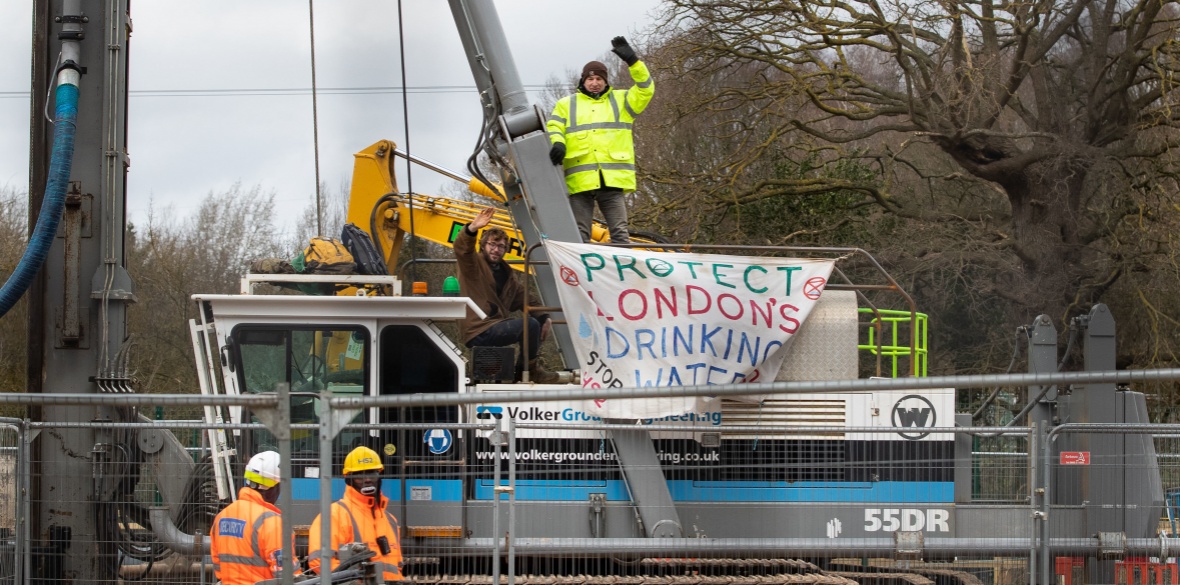This is the last article you can read this month
You can read more article this month
You can read more articles this month
Sorry your limit is up for this month
Reset on:
Please help support the Morning Star by subscribing here
TWO Extinction Rebellion activists occupied an HS2 drilling rig today over concerns about possible contamination of London’s water supply.
The protesters, including partially sighted former Paralympic cyclist James Brown, climbed on to the roof of a newly arrived 100ft drill at the high speed rail site in Colne Valley, Buckinghamshire.
Mr Brown, who was accused of causing a public nuisance in October after he glued himself to a plane at London City Airport, was accompanied by an activist named only as Jimmy.
He warned that drilling into a chalk aquifer would risk “toxins and waste in the surrounding environment going straight into the water supply and poisoning it,” which he claimed would affect 20 per cent of the capital’s population.
Mr Brown continued: “They can maybe treat the water, add more chemicals to it. But, at a time when clean water’s in short supply and is only going to get worse, we ought to be respecting our natural means of water filtration and clean water.”
However transport union TSSA called the action “incredibly short-sighted,” arguing that HS2 is vital to cut vehicle and aircraft emissions.
TSSA general secretary Manuel Cortes said: “I am sure the Extinction Rebellion activists trying to stop HS2 are motivated by good intentions.
“However, their actions are incredibly short-sighted as without the extra capacity HS2 will provide, we won’t be able to shift people and freight from roads onto rail — something we desperately need to do to cut carbon emissions and tackle climate change.
“There is little hope of reducing reliance on domestic flights without a high speed rail alternative.
“Put simply, we urgently need new railway lines for clean, efficient public transport. Given this, it makes complete sense to build these to 21st-century specifications. That means building HS2 and hopefully making sure it goes all the way to Scotland.”
An HS2 spokesman said they are working with Thames Water, Affinity Water and the Environment Agency to “deliver a water supply solution that does not add any significant new abstraction burden to the chalk aquifer, or takes any water from vulnerable chalk streams, such as the River Misbourne or River Chess.”










